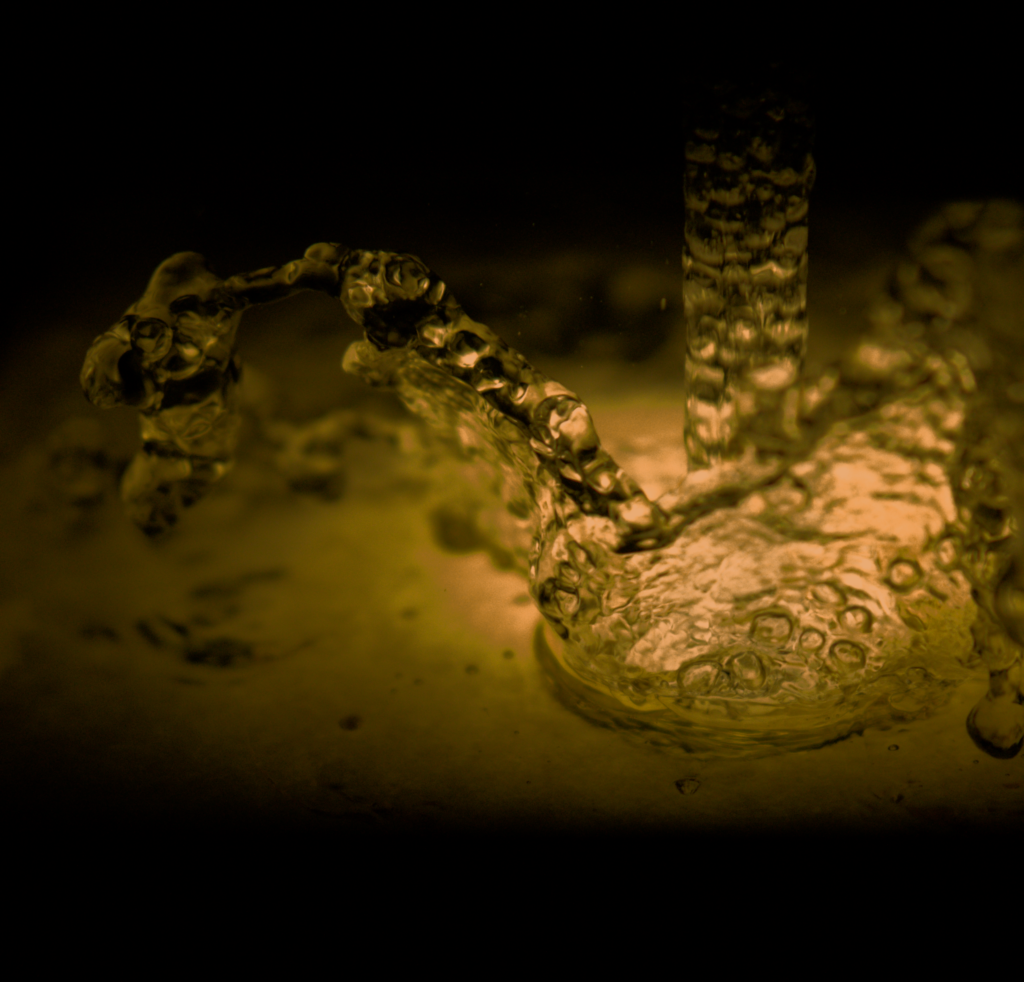This photo shows water from a faucet interacting with honey on glass plate. The water is flowing fast and the disruption creates turbulence which interacts with the highly viscous honey.
Rachel Marbaker – Get Wet 2023
Categories
Search for content or authors
Flow Vis Guidebook
- Introduction to the Guidebook
- Overview 1: Phenomena. Why Does It Look Like That?
- Overview 2: Visualization Techniques
- Overview 3: Lighting
- Overview 4 - Photography A: Composition and Studio Workflow
- Overview 4 - Photography B: Cameras
- Overview 4 - Photography C: Lenses - Focal Length
- Overview 4 - Photography C: Lenses - Aperture and DOF
- Overview 4: Photography D: Exposure
- Overview 4 - Photography E - Resolution
- Overview 5 - Post-Processing
- Clouds 1: Names
- Clouds 2: Why Are There Clouds? Lift Mechanism 1: Instability
- Clouds 3: Skew - T and Instability
- Clouds 4: Clouds in Unstable Atmosphere
- Clouds 5: Lift Mechanism 2 - Orographics
- Clouds 6: Lift Mechanism 3 - Weather Systems
- Boundary Techniques - Introduction
- Dye Techniques 1 - Do Not Disturb
- Dye Techniques 2 - High Visibility
- Dye Techniques 3 - Light Emitting Fluids
- Refractive Index Techniques 1: Liquid Surfaces
- Refractive Index Techniques 2: Shadowgraphy and Schlieren
- Particle Physics: Flow and Light
- Dilute Particle Techniques - Under Construction
- Particles 2: Aerosols
- Particles 3: In Water - Under Construction
- Art and Science
- TOC and Zotpress test
- Photons, Wavelength and Color

1 Comment. Leave new
Hi Rachel. This looks a little like the Kaye Effect. Try looking that up. Kaye, who discovered and published on the effect in 1963, was famous for admitting that he had no explanation for it. This was catnip to other fluids researchers but it was 40 years before a partial explanation emerged.